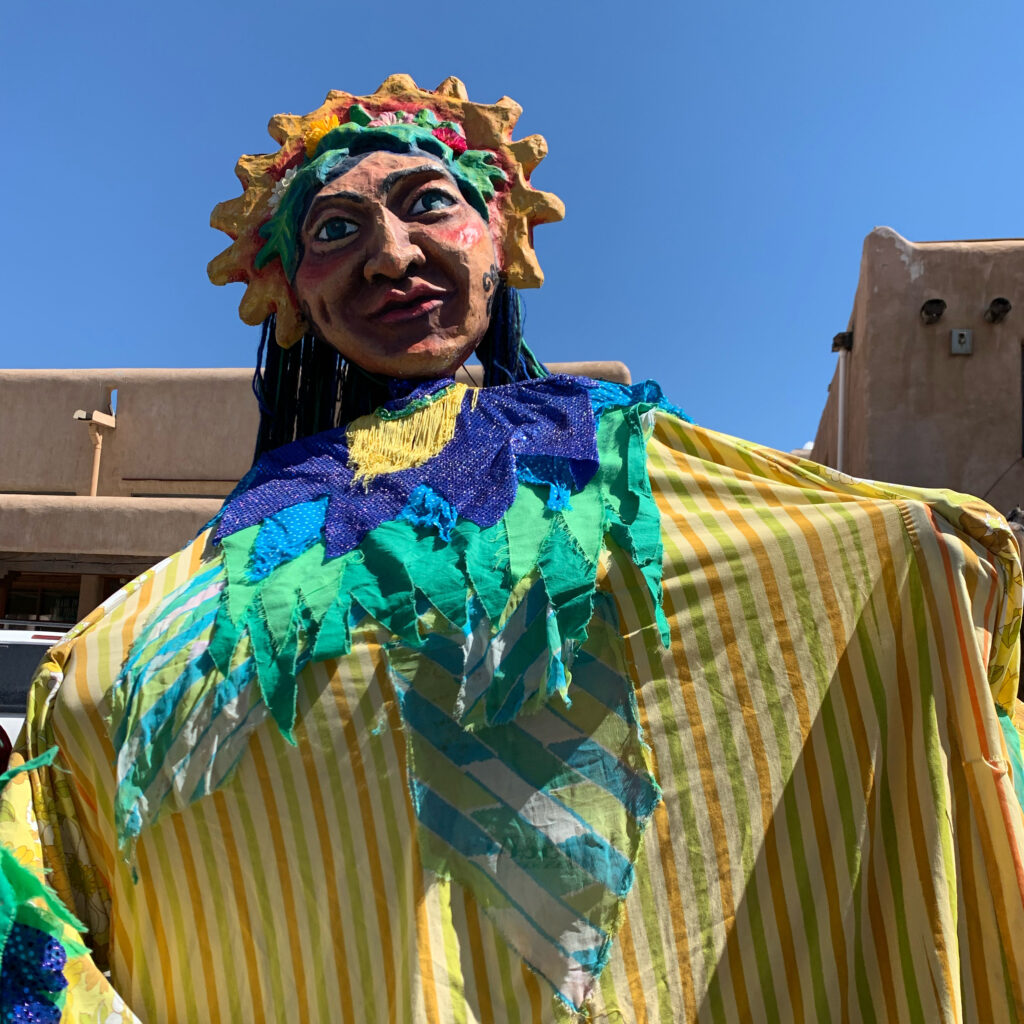Taos

Taos is a town in New Mexico, located in the Sangre de Cristo Mountains and near the Rio Grande. Its name comes from the Tiwa people, who are indigenous to the area. Taos has a rich history, including being a trading center along the Santa Fe Trail and being the site of an uprising against Spain in the 1600s. The town consists of three villages: Don Fernando de Taos, Taos Pueblo, and Ranchos de Taos. Taos Pueblo’s adobe settlement was recognized as a World Heritage site by UNESCO. Taos is known for its adobe architecture and has attracted writers and artists, such as Mabel Dodge Luhan, Ansel Adams, and Georgia O’Keeffe. It is also home to Kit Carson’s ranch and grave and is a center for Indian fiestas and ceremonial dances. The town has a population of around 5,700 people.
The Village of Fernandez de Taos was founded in 1615 as the northernmost outpost of New Spain, five years before the Pilgrims landed at Plymouth Rock. The Indian village north of Taos provided water for the European settlers in exchange for a pact to defend against marauding tribes. Taos was relatively peaceful until the Pueblo Rebellion in 1680, when the settlers were expelled but returned peacefully under the leadership of Don Diego de Vargas in 1692. For the next hundred years, Taos was a center of Spanish culture and had a self-sufficient agricultural and trading economy. During this time, the mission churches at Ranchos de Taos, Trampas, and Truchas were built and are now admired examples of Southwest architecture. Taos was also known for its annual trade fairs, which attracted Indians, colonists, French fur traders, and American “mountain men.” The Town of Taos was founded on May 1, 1796 when 63 families were granted the Don Fernando de Taos land grant by Governor Don Fernando Chacón. The town has a long history, having existed as a village under the Spanish Crown, Mexico, and later as a territory of the United States in 1846. After Mexico gained independence from Spain in 1821, Taos was ruled by Mexico for 26 years before being occupied by the United States in 1846. This occupation led to a period of turmoil and exploitation, resulting in the Taos Rebellion in 1847. On May 7, 1934, Taos was officially incorporated as a municipality under New Mexico state law.

The Taos Pueblo, a multi-storied adobe building complex still inhabited by the Tiwa speaking people of the Taos Valley, was first visited by Europeans in 1540 when a small detachment of Vasquez de Coronado’s expedition, led by artillery captain Hernando de Alvardo, arrived in search of the mythical Seven Cities of Cibola. Despite the many challenges and threats faced over the past 450 years, the people of Taos have managed to maintain much of their culture, language, and society. Today, the community of Taos includes people of various cultures and heritages, each with their own history and folklore. The area around Taos is rich in history, with various sites worth preserving, such as churches, trails, battle sites, and old cemeteries. It is important to remember and preserve these memories for future generations.
Taos County
Taos County is a region in northern New Mexico, bordered on the north by Colorado. It is located in the Southern Rocky Mountains and features high, aspen-covered mountains, including Mount Wheeler, which is the highest point in New Mexico. The county is home to the Taos and Picuris Pueblo Indian reservations, as well as Carson National Forest and several national recreation areas and state parks. The county has a long history, including Spanish colonization in the 1500s, revolts against Spanish and later U.S. rule, and defense against attacks by other Native American tribes. Taos County is known for its Indian ceremonies and celebrations, arts colony, and tourism and recreation industry. The county seat is the town of Taos, and the county has a population of around 33,000 people.

Comments are closed.